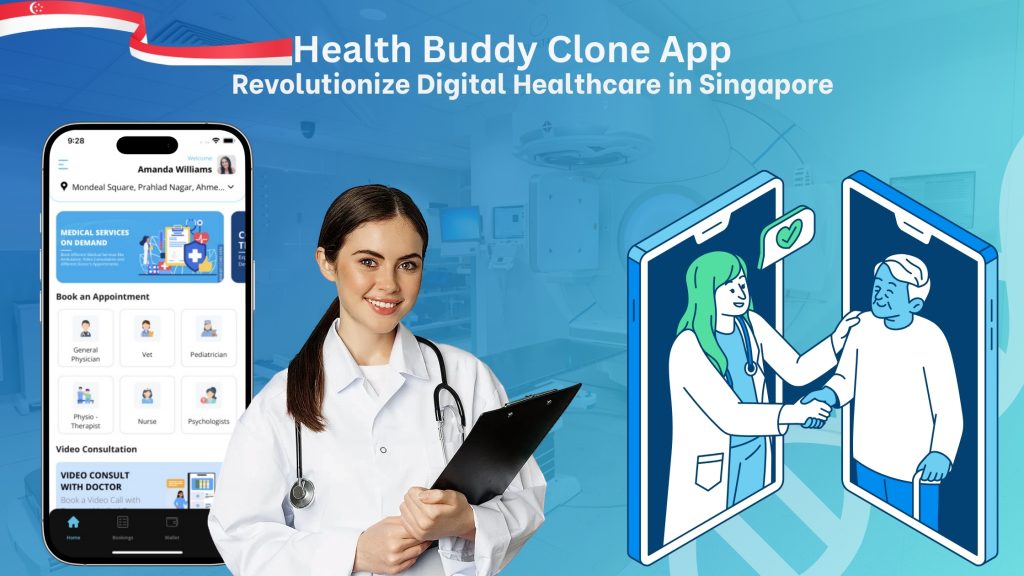
If you want the short version, it’s this. Your app lives or dies at the front desk. Not in a pitch deck. Not in a fancy UI mock up. It succeeds when the receptionist at 8.45 a.m. can find an available reschedule without putting a caller on hold for four minutes and twenty nine seconds. It breathes when an anxious dad sees the queue number move on his phone while his kid fidgets with the clinic’s fish tank. It grows when a tired GP taps two buttons after consult and the bill just… goes through.
That, right there, is the test for any Health Buddy clone. So let’s build from that world, not from a features list.
What patients expect because Health Buddy already trained them
Whether you love it or not, Singapore users have been trained by existing public apps. Health Buddy under SingHealth set expectations for things like mobile appointments, queue updates, and even mobile pay. Patients open an app and they expect the queue to be there, live, without a reload dance. They expect to tap and reschedule, not fill out a form and wait for someone to call back. Health Buddy has normalised that flow, publicly, for years.
And there is HealthHub too, the national portal that plugged together appointments, bills, lab results and even caregiver access. It set the bar for “one place for everything” which is both a gift and a curse. A gift because users understand the pattern. A curse because if your private app is slower or messier, they will bounce.
So yes, a clone framework gets you in the game fast. But we are not copying screens. We are copying user expectations. Subtle difference, big consequences.
The triangle of trust: clinic, patient, cloud
There are only three actors that matter at the start.
- The clinic wants fewer no shows, cleaner schedules, less phone traffic
- The patient wants certainty. Not perfect. Just clear
- The cloud wants to be invisible. Sync quietly. Do not break at lunch time
Your Singapore Health Services app should be designed so each point of this triangle gets a small, clear win on day one. If that sounds too simple, good. Simple is the hardest thing you will ever ship.
The first feature to get right is not a feature
It’s data dignity. Singapore is strict about health data. There are advisory guidelines for healthcare under the PDPA, and MOH has cyber and data security expectations under national initiatives. You can get everything else pretty but if consent, access control, audit logs and breach handling are fuzzy, you are building on sand. Do the boring bits early. Bake it into your product story so buyers do not have to ask twice.
Telemedicine? Same idea. It is regulated under the Healthcare Services Act. You want your app to feel licensed, careful, grown up. Say what you support, and show how. Even your marketing page should read like a responsible adult.
Front desk reality check
Walk through this. A mother calls to move an appointment from next Monday to Friday afternoon. In your clone:
- Staff view shows live slots across departments, plus rules for block times
- One tap reschedule, automatic SMS or in app note sent to the mother
- Waitlist logic asks if she wants an earlier slot if something opens
- The original slot is freed and released to the next person on the waitlist
That is not a “calendar”. That is operations design. Small detail, big sigh of relief.
Queues and quiet wins
Everyone talks about phone consultation, but the quiet champion is the queue. Live queue numbers, estimated wait, and soft nudges so patients do not show up thirty minutes late. Your Health Buddy clone should give three tiny gifts:
- A promise number that actually moves, not a decorative label
- A notify me when I am five away toggle
- A polite message if the clinic is running hot today, so expectations reset
If you do only this well, your app already feels helpful.
Medication is not a reminder, it is a ritual
A lot of apps ping you to take your pills. Nice. But the ritual is different. People want to know when to top up, how to request renewal, and where to pick up without standing in a queue that snakes past the blood test room. Health Buddy popularised the idea of top ups and a simple way to manage scripts in app. If you are cloning, push it further. Bundle three things on one screen: today’s dose, refill status, and the fastest pickup option near me. Done.
Build around families, not just individuals
Singapore healthcare is very family shaped. Parents manage kids appointments. Adult children help with mum’s screenings and dad’s meds. Your app should let people hold multiple profiles, with sensible consent and a calm way to switch. HealthHub’s caregiver access pattern is a great reference point. Learn the pattern, then make it warmer. Less bureaucratic. More human.
Last word before you sketch your roadmap
If you remember nothing else, remember this. Your does not need to be bigger than public apps. It needs to be closer. Closer to a front desk that is drowning. Closer to a patient who is worried about their mother’s next scan. Closer to the boring parts that make healthcare humane. Start there. You will be surprised how far that takes you.